What Is a Web Application Framework? A Complete Guide to Web Application Development Frameworks (2025)
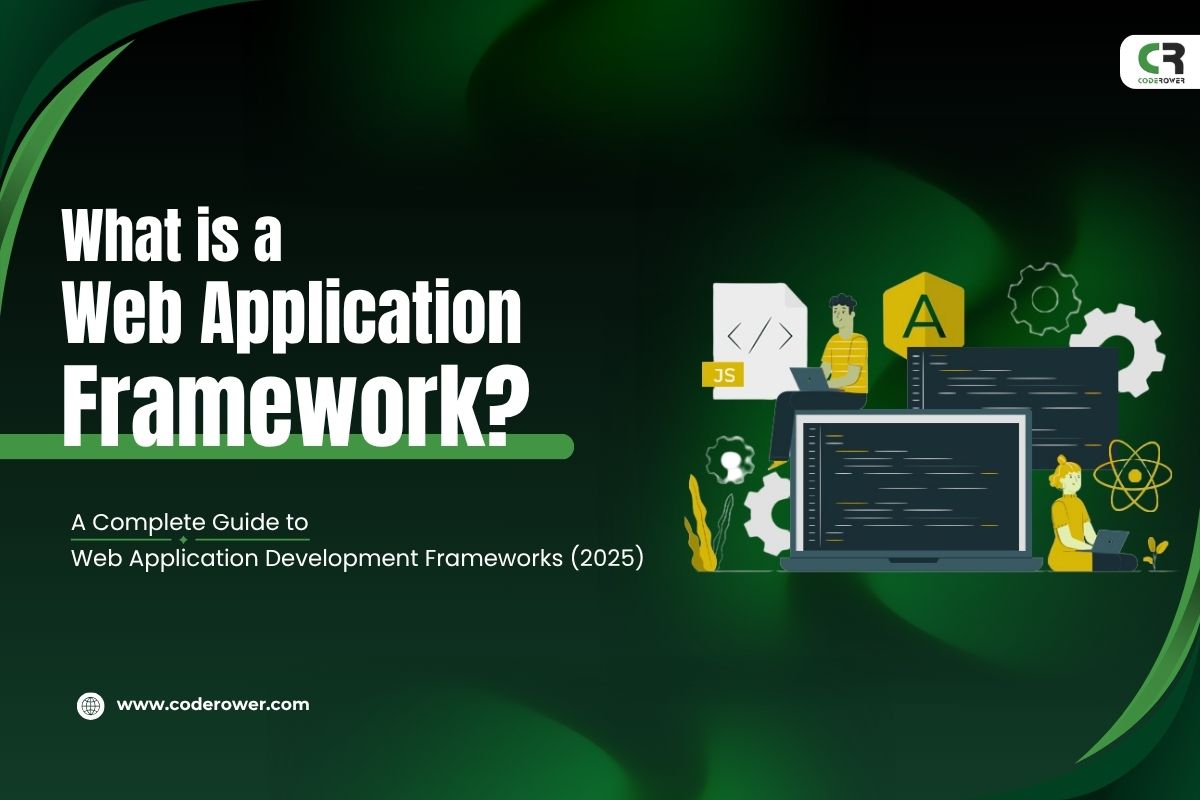
Are you planning to build a modern web application but unsure which technologies will give you the speed, scalability, and security you need to succeed?
You’re not alone. In today’s digital-first economy, businesses of all sizes—whether startups, enterprises, or SMEs—are under increasing pressure to deliver high-performing, reliable, and user-friendly web applications that stand out in a crowded market. Customers expect lightning-fast load times, smooth user experiences, and rock-solid security. And if your web app fails to deliver, you risk losing users to competitors who got it right.
So, how do you keep up?
The answer lies in choosing the right web application framework—a foundational tool that simplifies development, enforces best practices, and helps you build better applications in less time.
A web framework isn’t just a piece of tech—it’s the structural backbone of your application. It gives your development team a reusable set of components and conventions that make coding faster, easier, and more consistent. Whether you’re building a customer portal, an eCommerce store, a SaaS platform, or an internal dashboard, a reliable application framework can accelerate your project, enhance security, and make future updates much more manageable.
But here’s the challenge: with so many web frameworks available today—each with its own strengths, limitations, and learning curve—how do you choose the right one for your specific needs?
Should you go with a front-end web app framework like React, Angular, or Vue? Or do you need a powerful back-end solution like Django, Laravel, or Express? Maybe a full-stack web development framework that does it all?
These are critical decisions that can impact your development timeline, budget, and the long-term success of your application.
In this in-depth guide, we’ll cover everything you need to know about web application development frameworks, including:
- What a web application framework is and how it works
- Why using a framework in web development improves efficiency, scalability, and security
- The different types of website development frameworks (front-end, back-end, full-stack)
- Real-world benefits of using a framework application for your project
- The most popular and trusted web frameworks used by developers in 2025
- How to evaluate and select the right web framework for your unique business goals
Whether you're a startup founder planning your MVP, a CTO exploring scalable architecture, or a developer looking to upgrade your tech stack, this guide will give you the clarity and confidence to move forward.
Let’s dive in and explore how web frameworks are shaping the future of web development—and how you can use them to build smarter, faster, and better.
What Is a Web Application Framework?
A web application framework—often referred to simply as a web framework—is a pre-built software platform that provides developers with the fundamental building blocks they need to create robust web applications quickly and efficiently.
Think of it as a toolbox filled with reusable components, libraries, and best practices. Instead of starting from scratch every time you build a new website or app, a framework in web development allows you to follow a structured approach, saving you time while improving code quality and maintainability.
At its core, a web app framework abstracts many of the routine, repetitive tasks involved in development. It typically includes features like:
- URL routing and request handling
- Template engines for rendering dynamic content
- Built-in support for sessions, cookies, and authentication
- Database integration and ORM (Object-Relational Mapping)
- Security tools to protect against common threats (e.g., XSS, CSRF, SQL injection)
Using a web development framework helps developers avoid reinventing the wheel by offering a proven structure that enforces consistency, enhances performance, and improves security. This makes it easier to manage complex applications, scale projects efficiently, and onboard new developers without confusion.
Whether you’re working on a lightweight MVP or an enterprise-grade solution, using an application framework means you can focus on your app’s unique features and business logic, while the framework handles the plumbing behind the scenes.
Why Use a Web Framework?
In the world of modern web development, building a high-quality application from scratch without using a web framework is not only inefficient—it’s risky. As applications grow in complexity, developers need tools that provide consistency, reduce manual effort, and enforce best practices. That’s exactly what a web application framework is designed to do.
Whether you're developing a simple website or a complex enterprise-grade solution, a web app framework helps you streamline your workflow, minimize bugs, and improve the overall performance and security of your application.
Here are some of the top reasons why using a framework in web development is essential:
1. Faster Development
A web development framework comes with ready-to-use components, templates, and tools that eliminate the need to write common features from scratch. This drastically speeds up the development process, helping businesses get their products to market faster.
2. Built-In Best Practices
Most web frameworks enforce a structured coding approach. They follow the MVC (Model-View-Controller) or similar design patterns that help organize your codebase, making it cleaner, more readable, and easier to maintain.
3. Enhanced Security
Security is critical in web development. Leading application frameworks come with built-in protections against common vulnerabilities like SQL injection, cross-site scripting (XSS), and cross-site request forgery (CSRF). By using a framework, you're applying tried-and-tested security protocols to safeguard your application and its users.
4. Scalability and Maintainability
As your application grows, so does the complexity of your code. A well-structured framework application ensures your code remains modular and scalable, making it easier to maintain, update, and extend over time without breaking existing functionality.
5. Cross-Platform Compatibility
Modern website development frameworks are designed to support multiple devices, browsers, and screen sizes. They help developers build responsive, cross-browser-compatible applications without reinventing the wheel for every new environment.
6. Improved Collaboration
With a consistent project structure and coding standards in place, it's easier for multiple developers to work on the same project. This is especially valuable for larger teams or distributed development environments.
7. Strong Community and Ecosystem
Popular web application development frameworks often have vibrant communities, extensive documentation, and thousands of plugins or extensions. This ecosystem accelerates development, simplifies problem-solving, and ensures continuous improvement of the framework itself.
What Are the Different Types of Web Frameworks
Not all web applications are created the same, and neither are the tools used to build them. Depending on the complexity, functionality, and scale of your project, you’ll need to choose a web application framework that suits your specific needs.
There are three primary types of web frameworks used in modern development: front-end, back-end, and full-stack frameworks. Each plays a unique role in how your application functions and performs.
Understanding the differences between them is key to selecting the right web development framework for your project.
1. Front-End (Client-Side) Development Frameworks
Front-end web frameworks are used to create the part of a web application that users see and interact with—the interface, layout, and overall user experience. These frameworks form the visual layer of a framework application, ensuring that your site is not only functional but also intuitive and visually appealing.
A front-end web application framework simplifies the process of building responsive, interactive, and dynamic user interfaces. It does this by managing the Document Object Model (DOM), supporting client-side routing, and seamlessly connecting to APIs for real-time content rendering.
Popular Front-End Web Frameworks:
- React.js: Developed by Meta (formerly Facebook), React is a component-based JavaScript library that's widely used for building fast, scalable user interfaces and single-page applications (SPAs). Its virtual DOM and reusable components make it a top choice for modern front-end development.
- Vue.js: Lightweight, flexible, and easy to learn, Vue is ideal for building high-performance, reactive web interfaces. It offers a progressive architecture, meaning you can use as little or as much of the framework as you need—perfect for both small projects and complex web applications.
- Angular: Created by Google, Angular is a comprehensive front-end web development framework that offers built-in tools for form validation, dependency injection, routing, and more. It’s particularly well-suited for large-scale enterprise applications that demand maintainability and scalability.
These front-end web app frameworks handle everything on the client side—what the user sees in the browser. However, because they don’t manage server-side logic or data storage, they are typically paired with a back-end application framework to create a full-featured, production-ready web application.
2. Back-End (Server-Side) Development Frameworks
While the front-end handles what users see, the back-end powers everything behind the scenes. A back-end web framework manages the server-side logic that keeps your application running—handling user requests, processing data, managing authentication, and connecting to databases.
These web application frameworks provide the foundation for core functionality such as data storage, business logic, server configuration, and the creation of RESTful APIs. They are essential for ensuring that your framework application is fast, reliable, and secure.
With a robust web development framework on the back end, developers can build scalable server environments, enforce security protocols, and ensure that applications are optimized for performance under heavy loads.
Popular Back-End Web Frameworks:
- Express.js: A lightweight and flexible Node.js-based web app framework, Express is designed for building fast APIs and scalable server-side applications. It offers simplicity without sacrificing power, making it ideal for microservices and real-time apps.
- Django: A high-level Python web framework known for its security, scalability, and “batteries-included” philosophy. Django is ideal for developers who want to build secure, data-driven applications quickly, thanks to features like built-in authentication and an admin interface.
- Ruby on Rails: Built on the Ruby programming language, Rails follows the “convention over configuration” principle, enabling rapid development of full-featured web applications. It’s well-suited for startups and fast-moving teams looking to prototype and launch quickly.
- Laravel: A modern and elegant application framework built on PHP, Laravel is loved for its clean syntax, extensive ecosystem, and ease of use. With built-in tools for routing, caching, authentication, and testing, Laravel simplifies complex server-side logic.
- Spring Boot: A powerful Java-based web development framework, Spring Boot is commonly used in enterprise environments. It provides robust tools for building large, scalable applications with advanced security, performance monitoring, and microservices support.
These web frameworks are crucial for applications that demand secure user authentication, complex data operations, and seamless communication with client-side interfaces. Whether you're building an enterprise system or a simple back-end service, choosing the right web application framework ensures your server-side logic is stable, secure, and scalable.
3. Full-Stack Development Frameworks
A full-stack web development framework offers a complete solution for building web applications, combining both front-end and back-end capabilities within a single cohesive platform. These frameworks are designed to streamline the entire development process, enabling developers to build user interfaces, handle server logic, manage databases, and deploy applications—all using a unified environment or language.
With a full-stack web application framework, development teams can accelerate project timelines, reduce integration issues, and maintain better consistency across the application’s architecture. This makes them particularly valuable for startups, small teams, and projects that demand fast, efficient development cycles.
Popular Full-Stack Web Frameworks:
- Next.js: Built on top of React, Next.js is a powerful web app framework that supports both server-side rendering and static site generation. It’s ideal for performance-optimized, SEO-friendly applications and is widely adopted in modern web development projects.
- Meteor.js: Meteor is a JavaScript-based full-stack web framework that enables developers to build real-time applications with shared code between the client and server. Its simplicity, built-in data layer (using MongoDB), and tight integration with front-end libraries like Blaze, React, or Angular make it a go-to choice for rapid prototyping and development.
- Blazor: Backed by Microsoft, Blazor is a C#-based application framework that allows developers to build interactive web UIs without writing JavaScript. It’s part of the ASP.NET ecosystem and provides a seamless development experience for .NET developers looking to create modern, single-page applications using familiar tools.
Full-stack frameworks in web development are especially useful for teams that want to minimize context switching, reduce dependency on multiple technologies, and manage their entire tech stack more efficiently. By providing an all-in-one solution, these web development frameworks empower developers to build and launch full-featured applications faster, with less friction and more flexibility.
What Are the Key Benefits of Using Web Development Frameworks
In today’s fast-paced development environment, efficiency, performance, and scalability are non-negotiable. That’s where web development frameworks come in. Whether you're building a simple site or a complex enterprise application, using a web application framework can significantly streamline your development process and improve the quality of your final product.
Here are the key benefits of using a framework in web development:
1. Faster Development Time
A major advantage of any web framework is the ability to reuse pre-written code and components. From routing and templating to session handling and database management, frameworks offer built-in solutions that reduce the need for writing repetitive code. This accelerates your development cycle and allows your team to focus on what matters most—delivering unique features.
2. Improved Code Organization
Most web frameworks follow structured patterns such as MVC (Model-View-Controller) or MVVM (Model-View-ViewModel). This enforces a clean separation of concerns in your code, making it easier to read, maintain, and scale. It also improves collaboration across teams by establishing a consistent coding standard.
3. Enhanced Security
Security is a top priority in web development, and web application frameworks come equipped with built-in protections against common threats like SQL injection, XSS (cross-site scripting), CSRF (cross-site request forgery), and more. These security features help developers avoid vulnerabilities and ensure user data is protected.
4. Scalability and Performance
The best web development frameworks are designed with performance in mind. They support efficient code execution, caching mechanisms, and scalability features that allow your application to handle increasing traffic and complex operations with ease.
5. Easier Maintenance and Debugging
Thanks to consistent architecture and built-in debugging tools, maintaining a framework application is far simpler compared to building one from scratch. Frameworks also make it easier to update or refactor code, ensuring long-term reliability and adaptability as your application evolves.
6. Strong Community and Ecosystem
Established website development frameworks benefit from large developer communities and rich ecosystems. This means better documentation, more tutorials, regular updates, and a wide range of plugins or libraries that can extend functionality and reduce development effort.
7. Cross-Browser and Device Compatibility
Modern web app frameworks are built with responsive design in mind, ensuring your application works smoothly across various browsers, devices, and screen sizes. This helps deliver a seamless user experience across all platforms.
8. Cost-Effective Development
By reducing development time, minimizing bugs, and streamlining maintenance, using a web application development framework can significantly cut overall project costs, especially in long-term development cycles or large-scale projects.
Popular Web Application Development Frameworks in 2025
The web development landscape evolves rapidly, but some web application frameworks have stood the test of time, continually improving to meet modern demands. In 2025, developers will have access to a wide range of powerful web frameworks, each offering unique features tailored to different use cases.
Here are some of the most trusted and widely adopted web development frameworks being used today across startups, enterprises, and tech-driven organizations:
1. React.js (Front-End)
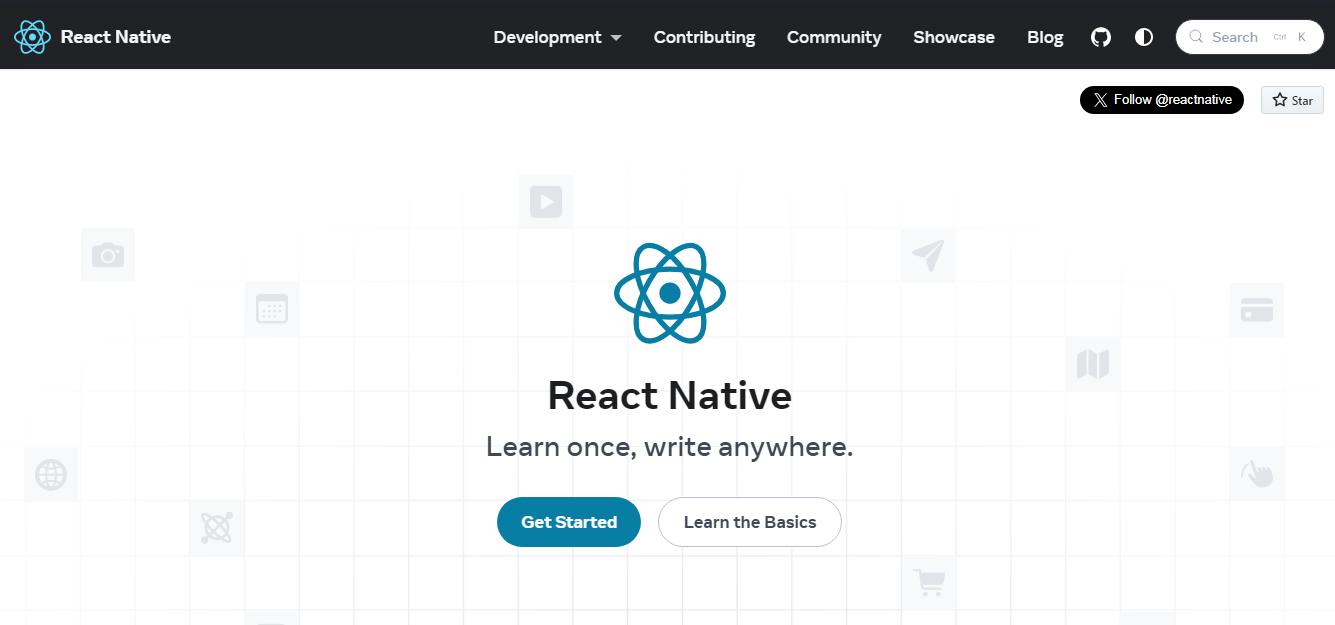
React remains the most widely used front-end web application framework in 2025—and for good reason. Developed and maintained by Meta, React enables developers to build fast, dynamic user interfaces through a modular, component-based architecture.
What sets React apart is its virtual DOM, which improves rendering performance and makes UI updates seamless. With a massive community, extensive documentation, and a rich ecosystem of libraries and tools, React is ideal for building everything from single-page applications (SPAs) to full-scale web platforms. Paired with Next.js, React also supports server-side rendering and static generation, enhancing SEO and performance.
Whether you're a solo developer or part of a large team, React is often the go-to web framework for scalable, maintainable, and future-proof applications.
2. Vue.js (Front-End)
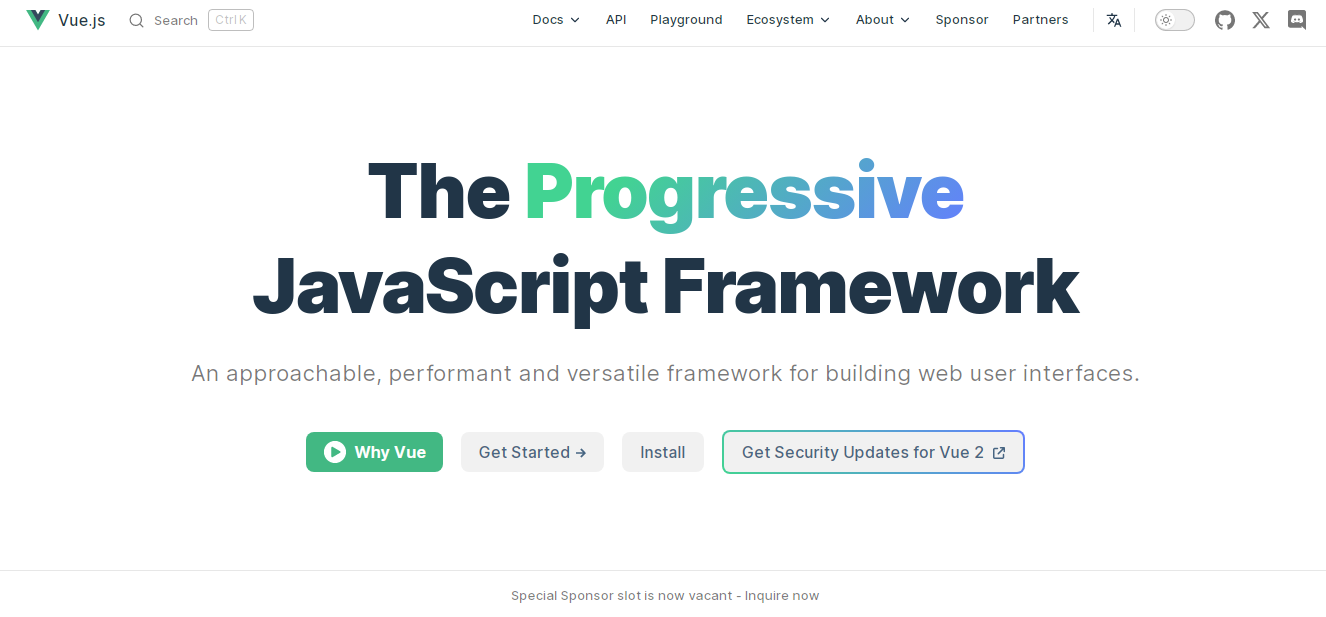
Vue continues to rise in popularity as a flexible and approachable web development framework that doesn’t sacrifice power for simplicity. Its progressive design allows developers to incrementally adopt features, making it perfect for both small-scale apps and complex interfaces.
Vue’s reactivity system, lightweight core, and ease of integration with existing projects have made it especially appealing to startups and agile teams. The growing plugin ecosystem, strong community backing, and integration with tools like Nuxt.js make Vue a top choice for anyone seeking a fast, modern web framework for front-end development.
3. Angular (Front-End)
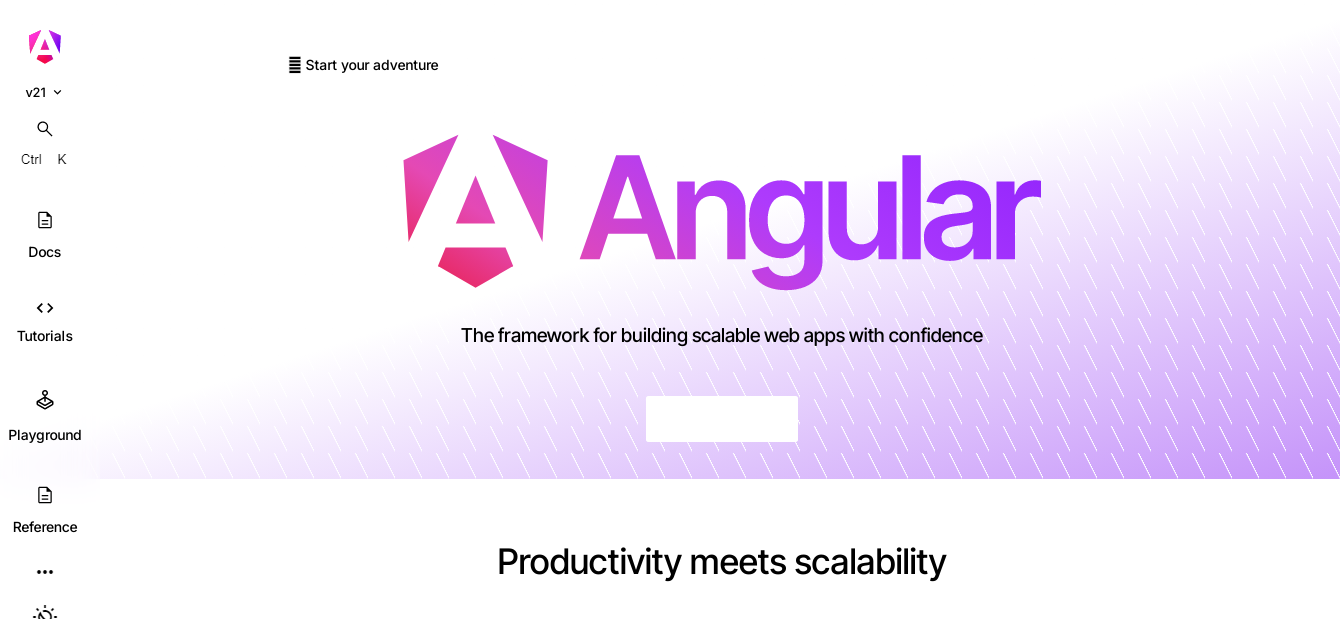
As a full-featured, enterprise-grade web application framework maintained by Google, Angular brings structure and robustness to front-end development. Unlike React or Vue, Angular is a complete solution out of the box, offering everything from routing to form handling and HTTP requests.
Built with TypeScript, Angular offers strong typing, advanced tooling, and a scalable architecture ideal for large, complex applications. Its support for RxJS (reactive programming) and modular development also makes it great for real-time applications. In 2025, Angular continues to be widely used in sectors like fintech, healthcare, and government platforms where performance, security, and maintainability are paramount.
4. Next.js (Full-Stack)
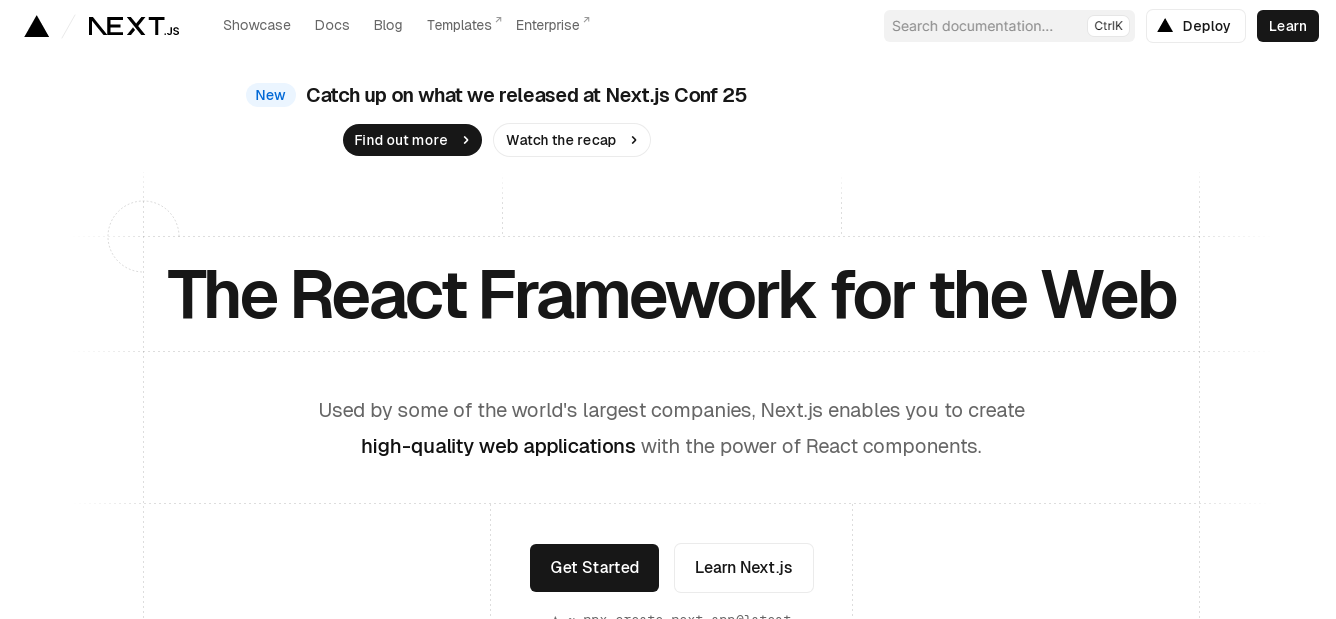
Next.js has firmly established itself as the leading full-stack web development framework built on React. Designed to enhance React’s capabilities, Next.js supports server-side rendering (SSR), static site generation (SSG), and hybrid rendering, making it a powerful solution for building SEO-optimized and performance-critical web apps.
Its built-in routing, API support, image optimization, and support for edge functions make Next.js ideal for fast-moving projects, SaaS platforms, eCommerce websites, and enterprise applications. In 2025, it remains a top choice for teams seeking speed, scalability, and simplicity in one package.
5. Express.js (Back-End)
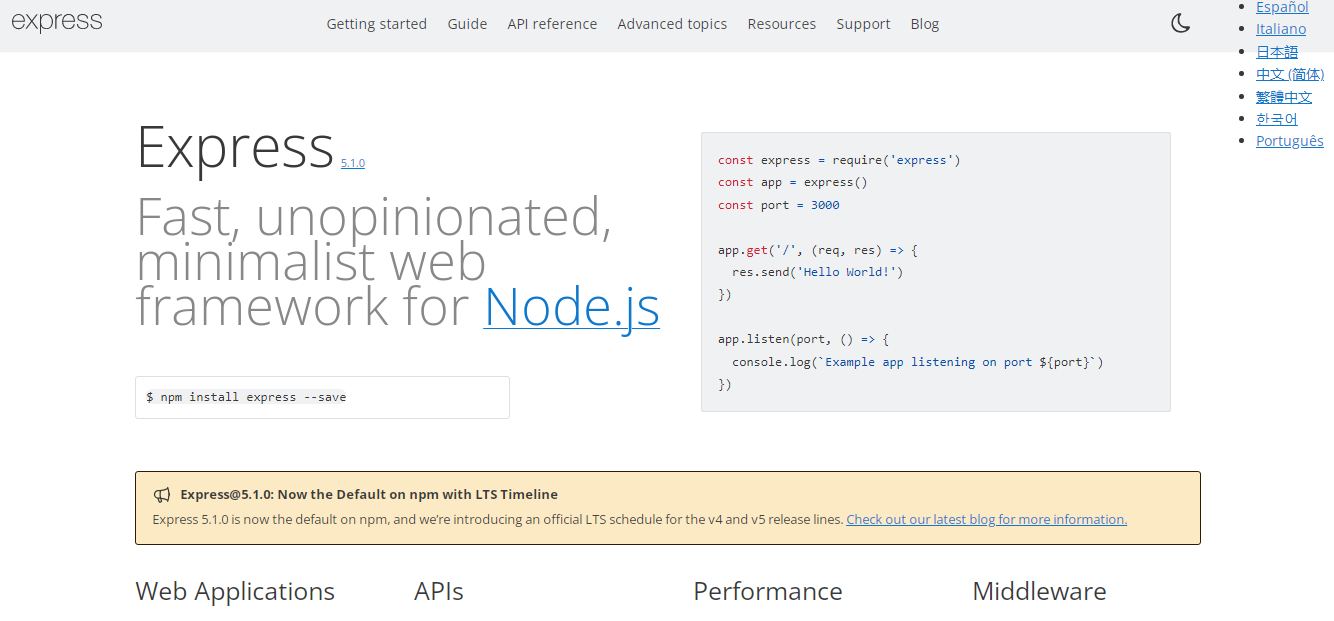
Express is a minimalist, unopinionated web app framework for Node.js that continues to power countless web servers and APIs in 2025. Its flexibility and speed make it ideal for building scalable microservices, REST APIs, and real-time applications like chat apps or dashboards.
As the foundation of the Node.js ecosystem, Express integrates easily with popular tools, databases, and front-end frameworks, giving developers full control over application structure. Despite its simplicity, it is extremely powerful when paired with middleware and other libraries, making it a favorite among developers who prefer lightweight, fast, and modular solutions.
6. Django (Back-End)
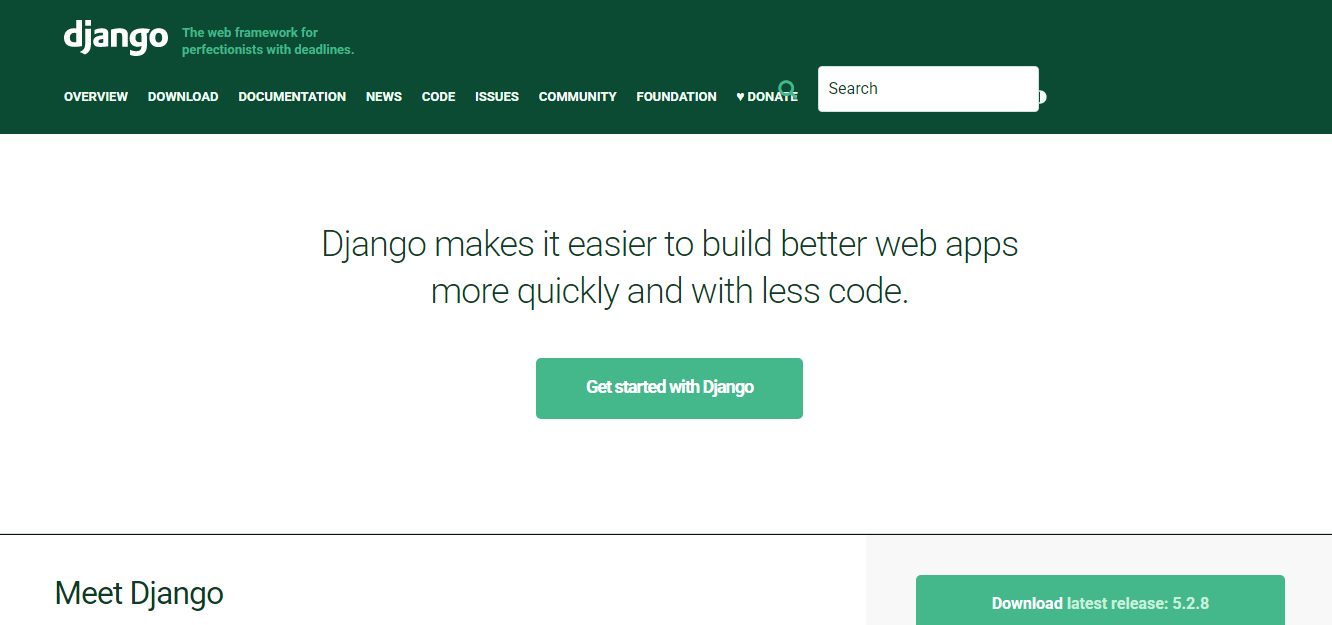
Written in Python, Django is one of the most secure and scalable back-end web frameworks available. Its “batteries-included” philosophy means that features like user authentication, admin panels, and ORM (Object-Relational Mapping) come built-in—reducing development time significantly.
Django promotes clean, pragmatic design and follows the DRY (Don't Repeat Yourself) principle, which helps developers build maintainable applications efficiently. It's widely used for content-heavy and data-driven platforms such as eLearning systems, content management systems, and financial platforms. In 2025, Django continues to thrive due to its strong community, security standards, and rapid development capabilities.
7. Laravel (Back-End)
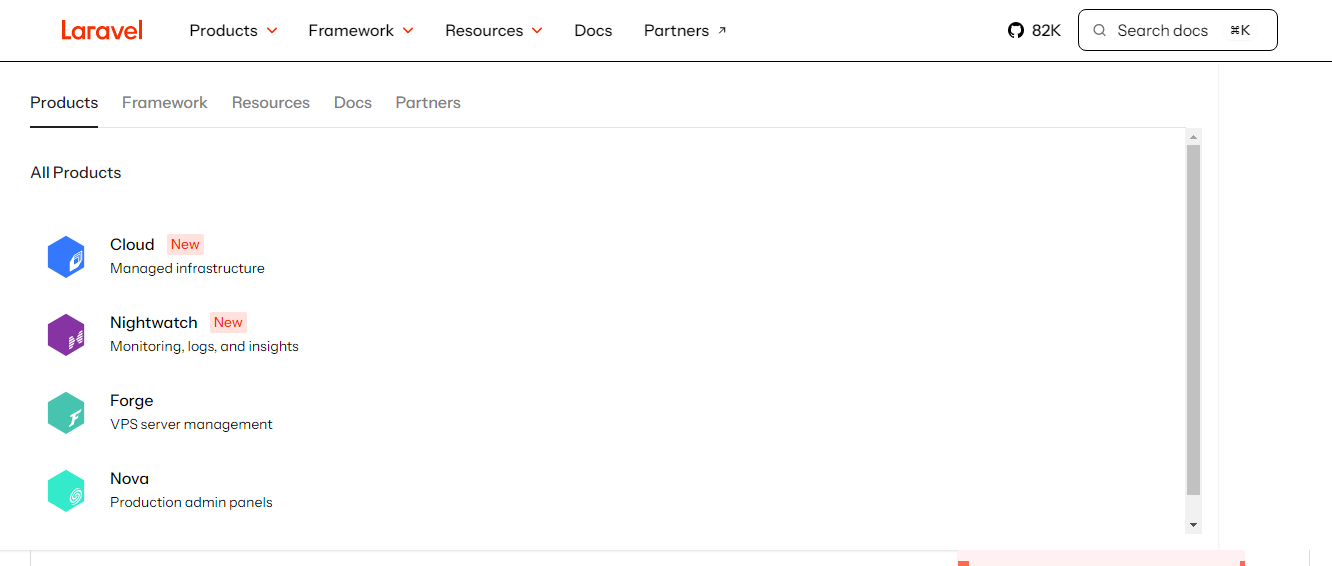
Laravel is a feature-rich application framework built on PHP, known for its elegant syntax and developer-friendly features. It simplifies complex tasks like routing, sessions, authentication, and caching. The Blade templating engine, Eloquent ORM, and built-in testing tools make Laravel a complete solution for modern web application development.
Laravel is particularly popular among small to mid-sized businesses and agencies that need to move fast without sacrificing quality. The Laravel ecosystem, including tools like Laravel Forge, Vapor, and Nova, makes deployment, scaling, and maintenance straightforward in 2025.
8. Spring Boot (Back-End)
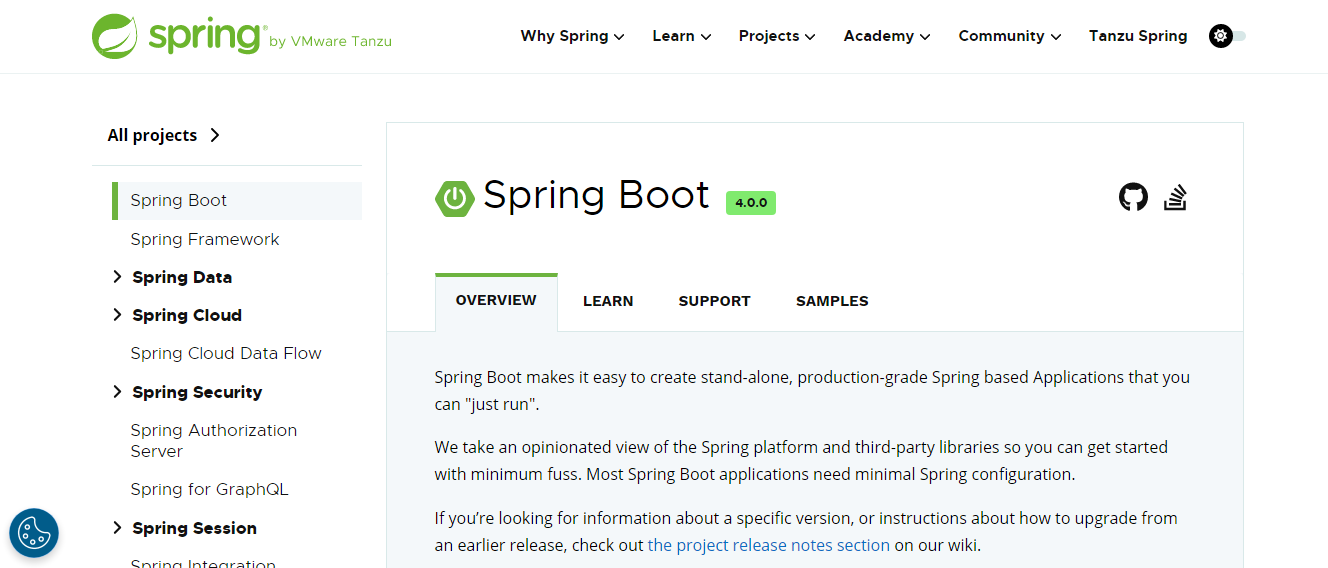
Spring Boot is a powerful Java-based web app framework built for high-performance, enterprise-grade applications. It's used by some of the world’s largest organizations for mission-critical software due to its reliability, modular architecture, and production-ready setup.
Spring Boot simplifies the complexities of the traditional Spring framework, offering auto-configuration, embedded servers, and streamlined deployment. It’s particularly valuable in large-scale systems, banking applications, and distributed microservices. In 2025, Spring Boot continues to dominate Java-based back-end development.
9. Ruby on Rails (Back-End)
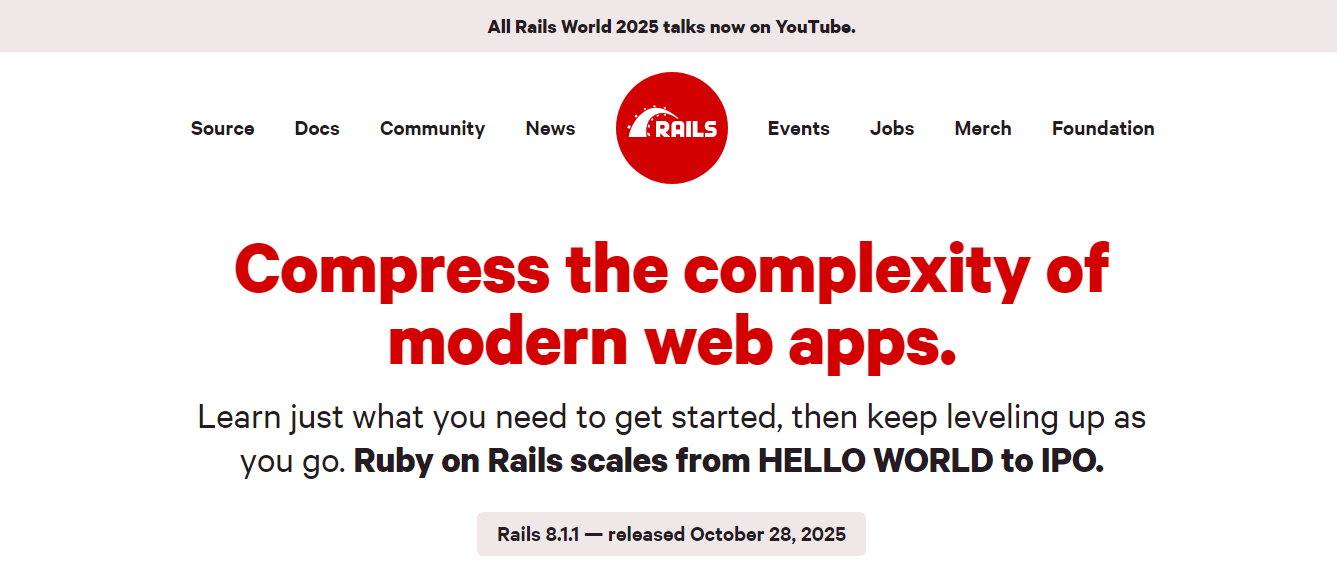
Ruby on Rails—often simply called Rails—has long been a go-to website development framework for rapid prototyping and clean, maintainable code. It follows the “convention over configuration” principle, allowing developers to build applications with minimal setup.
Rails is particularly well-suited for MVP development and startups aiming to iterate quickly. With a vibrant community, mature tooling, and a strong emphasis on convention and simplicity, Rails remains a dependable choice for building scalable web applications in 2025.
How to Choose the Right Web Framework for Your Web Application Development Project
Choosing the right web application framework is a critical decision that can determine the success, scalability, and maintainability of your project. With so many web frameworks available—each offering different features, languages, and capabilities—it's essential to evaluate your business needs, team skills, and long-term goals before making a choice.
Here’s a step-by-step approach to help you choose the most suitable web development framework for your application:
1. Define Your Project Requirements
Start by identifying what your application needs to do. Is it a real-time chat app? A data-heavy dashboard? An eCommerce site? A content platform?
Understanding your project’s complexity, expected traffic, performance requirements, and integration needs will help you determine whether you need a front-end, back-end, or full-stack web framework.
2. Choose Based on Application Type
- For simple websites or landing pages, consider lightweight website development frameworks like Vue.js or static site generators like Next.js.
- For enterprise-level apps, use scalable and secure options like Angular, Spring Boot, or Django.
- For MVPs and startups, frameworks like React, Laravel, or Ruby on Rails offer rapid development and flexibility.
3. Match the Framework to Your Team’s Expertise
Choosing a framework in web development that your team is already familiar with will save time and training costs. For example, if your developers are proficient in Python, Django might be the best fit. If they work primarily in JavaScript, consider Express.js or React.
4. Evaluate Community and Ecosystem
The size and activity of a framework’s community matter. A large community means better documentation, more libraries, plugins, frequent updates, and faster troubleshooting. Popular web application development frameworks like React, Angular, and Laravel have mature ecosystems and strong support networks.
5. Consider Scalability and Performance
If you’re building a web app that’s expected to scale or handle heavy user traffic, choose a web app framework known for high performance and scalability. Frameworks like Spring Boot, Express.js, and Next.js are built to support large-scale applications with performance in mind.
6. Prioritize Security Features
Security should never be an afterthought. Choose a web framework that includes built-in protections against common vulnerabilities (e.g., SQL injection, CSRF, XSS). Django, Laravel, and Spring Boot, for instance, come with robust security features out of the box.
7. Assess Development Speed and Flexibility
Some application frameworks prioritize rapid development and prototyping, while others focus on strict architecture and long-term maintainability. If you're under a tight deadline, opt for a framework like Rails or Laravel. For more structured, scalable systems, Angular or Spring Boot may be better suited.
8. Look at Integration Capabilities
Ensure the framework can integrate easily with third-party tools, databases, APIs, cloud platforms, and DevOps workflows. A flexible web development framework will support smoother deployment, monitoring, and scaling.
9. Analyze Long-Term Maintenance and Support
Think beyond the launch. Choose a framework application that’s actively maintained, compatible with modern development practices, and regularly updated to support new browser standards, devices, and technologies.
10. Future-Proof Your Choice
Finally, choose a web framework that aligns with long-term trends. In 2025 and beyond, developers increasingly favour modular, performance-driven, and SEO-friendly frameworks. Make sure your choice can evolve with your business.
What Are the Common Misconceptions of Web Frameworks?
Despite their widespread adoption, web application frameworks are often misunderstood, especially by beginners or businesses unfamiliar with modern web development frameworks. Misconceptions can lead to missed opportunities, increased development time, and technical debt down the line.
Let’s clear up a few of the most common myths surrounding web frameworks and explain the realities behind them:
Misconception 1: Web frameworks are only necessary for large or complex applications.
Reality:
It’s a common belief that application frameworks are overkill for small projects or MVPs. In reality, even the simplest web apps benefit from using a structured framework in web development.
By providing pre-built tools for routing, data handling, and security, a web app framework can streamline the development process and reduce bugs, regardless of your project’s size. Plus, starting with a framework makes it easier to scale your app later without rewriting the entire codebase.
Misconception 2: Frameworks limit creativity and flexibility.
Reality:
Some developers worry that using a web framework restricts their ability to innovate. While it’s true that frameworks offer conventions and predefined methods, they are designed to handle repetitive and foundational tasks, freeing you to focus on building custom features and business-specific logic.
Most website development frameworks are highly customizable and offer extension points or plugin systems, making them flexible enough for nearly any use case.
Misconception 3: Learning a framework is time-consuming and unnecessary.
Reality:
It might seem faster to build without a framework—especially for simple tasks—but in the long run, this can lead to inefficiencies, spaghetti code, and major refactoring as your application grows.
Investing time in learning a web application development framework can significantly reduce development effort down the line. Frameworks enforce best practices, improve code consistency, and come with tools that handle critical aspects like security, testing, and performance optimization—ultimately saving you time and improving product quality.
Why Choose CodeRower for Web Application Development?
Choosing the right web development framework is just the first step—the real difference lies in how it’s implemented. At CodeRower, we bring deep expertise, agile execution, and a forward-thinking approach to every project, ensuring your web application is not only functional but also scalable, secure, and future-ready.
Here’s what sets CodeRower apart:
1. Full-Stack Framework Expertise
From React, Vue, and Angular on the front end to Django, Laravel, and Spring Boot on the back end, we work with a wide range of modern web frameworks. Our engineers select the best technologies to match your project requirements, ensuring both performance and flexibility.
2. Tailored Solutions for Every Industry
We’ve built robust web application development solutions across industries, including healthcare, e-commerce, fintech, travel, and education. Every product we deliver is tailored to user needs, business objectives, and industry-specific challenges.
3. Agile & Transparent Development Process
Our agile methodology allows for continuous iteration, quick pivots, and full transparency. With regular check-ins, updates, and collaboration, we make sure you're always in control of your project’s direction.
4. Security-First Architecture
Security isn’t an afterthought at CodeRower—it’s embedded in our development process. Our team follows best practices in securing your framework-based application against evolving threats.
5. Scalable, Future-Ready Applications
With a strong focus on clean code, modular architecture, and modern dev-ops, we ensure that every web app framework implementation we deliver is built to grow with your business, without costly rewrites or rework.
Whether you need a powerful framework application for enterprise use or a fast-moving MVP for your startup, our team helps you build web solutions that are efficient, maintainable, and aligned with your business goals.
Conclusion
In the ever-evolving digital landscape, choosing the right web application framework is more than a technical decision—it’s a strategic one. Whether you’re building a simple website, a data-driven enterprise platform, or a fast-moving startup product, the right web framework can dramatically improve your speed, performance, security, and scalability.
With a clear understanding of different types of web frameworks, their benefits, and how to evaluate them, you’re better equipped to make informed decisions that align with your project goals. And by partnering with a skilled development team, you can turn any idea into a high-performing, future-ready application.
At CodeRower, we don’t just build applications—we architect digital experiences using the most powerful web development frameworks available. Let us help you choose, build, and scale the right framework application for your business.
Ready to start your web development journey with the right framework? Contact CodeRower today and let's build something remarkable together.
 +91 971 1141 179 ,
+91 971 1141 179 ,